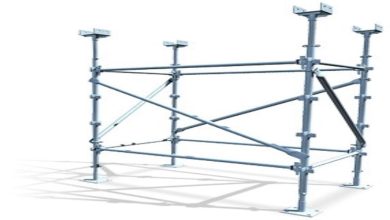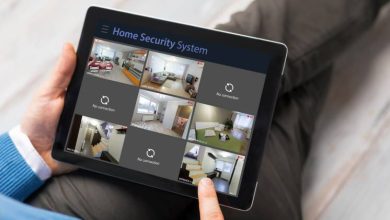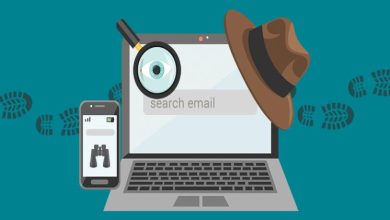The future of telehealth and the role of nurses in remote patient care

The COVID-19 pandemic brought about many surprising upheavals. The unprecedented lockdown changed many things, including healthcare delivery. It closed clinics, overloaded testing facilities, overcrowded emergency and ward rooms, and overworked doctors and nurses. It all stretched the healthcare systems worldwide to the brink of collapse.
This, combined with the strict enforcement of social distancing, forced a sudden mass adoption as well as acceptance of telehealthcare in all domains of medical facilities. Telehealth has since evolved extensively as a viable option for medical care.
The widespread use of telehealth in the last three years has also highlighted the gaps and weaknesses in the telehealth system. There are still many limitations in diagnostics, accessibility, and confidential data security.
Evolution of telehealth
Telehealth is the system of providing healthcare using the remote connection between patient and doctor via technology. Ever since the advent of communication technology, patients and doctors have used available communication channels for consultations – from postal communication to telegram to telephone to most modern live video consultations.
For many decades, before the pandemic, telehealth services were restricted to telemedicine, had many limitations, were ad hoc and used between few privileged patients-doctors. In the past few decades, governments created very limited telehealth services to support rural and underserved patients to gain access to specialists. However, starting in 2020-2021, telehealth has now become widespread.
Simply put, telehealth uses two-way communication technology to connect patients and doctors to provide healthcare services to patients without the need for them to be in the same physical location. The doctor can examine the patients remotely and get patient vitals, such as temperature, pulse rate, oxygen level, blood pressure, etc., through technology. Based on this and their medical knowledge, the doctor can then prescribe a precise medication and treatment for the patient.
Future of telehealth
During the pandemic, telehealth proved a savior for patients, hospitals, clinics, and doctors. It allowed patients to get quality medical care and doctors to give the best medical care without breaking pandemic protocols and preventing the spread of COVID-19.
Currently, telehealth services incorporate live text chat and video chat using phones, apps and webcams. With evolving technology, the future of telehealth remains positive. Telehealth is now a vital part of the future of healthcare delivery, and it is expected to grow 10-fold in the next five years.
In the next 25-30 years, telehealth will no longer be virtual care; it will just be healthcare. The increased use of telehealth, coupled with technological innovation, will make it possible to take a remote full-body CT scan while other instruments check various personal health metrics and vitals, recording and sending those details to a care team. The data will be analyzed in real time with artificial intelligence, and a transdermal infuser will deliver a tailored and validated cocktail of exactly what’s needed, whether it’s vitamins, pain relievers, beta-blockers, or another type of medication.
Drivers for telehealth
The pandemic has exposed the potential strategic telehealth can bring to the healthcare industry, and organizations worldwide plan to continue using this technology. The key trends driving the future of telehealth are:
- Chronic disease
- Mental health
- User experience
- Increased doctor/nurse utilization
- Pediatric care
Chronic disease is widespread in the population. These types of diseases include diabetes, respiratory problems, arthritis, Alzheimer’s, cancer, kidney disease, heart disease and more, and almost one-third of adults suffer from one or more of these globally. Most of these patients do not pursue regular follow-ups due to cost and other factors, and there is a lack of adherence to the patient care plan. Telehealth provides a convenient way for patients to connect to their doctor quickly and frequently, without long commutes and long queues. It has the potential to reduce costs, improve patient engagement and adherence to care plans and prevent health deterioration. Chronic patients can monitor their health more closely with the help of telehealth gadgets and telehealth nurses.
There is always a shortage of specialists in the mental health area, but with the progression of teletherapy and telepsychiatry, conditions may improve significantly. Many doctors, therapists and psychiatrists are moving to telehealth video conferencing to treat and support the mental health of their patients. The number of patients who prefer telemedicine for their mental healthcare will only increase in the coming years.
The demand for convenient access to healthcare services will continue to grow. Healthcare providers are facing the challenge of greater expectations from patients. Patients want their telehealth experience to be easy, seamless, and integrated, not to struggle with different apps and websites. This means developers in healthcare need to ensure comprehensive services through integrated video, chat and secure data and privacy while allowing for real-time updates, reminders, and follow-ups.
Active conversation between patients and healthcare professionals leads to optimal utilization of healthcare professionals as they can consult more clients in the future. It is a cost-effective first line of treatment for non-urgent and follow-up appointments.
Children often have difficulty communicating their symptoms and are shy or scared in front of medical staff. Telehealth use for pediatric care is a solution for all these; it also makes medical appointments more convenient for parents and doctors and lowers the costs of high-quality care.
Telehealth and remote monitoring
As digital technology progresses, the methods to connect and monitor devices get more powerful and features packed, making it easier for doctors and nurses to provide remote medical care and meet remote patients’ expectations.
Remote patient monitoring will give patients greater control over their health outcomes because they have a more holistic view of their health, and patients will be able to connect with their nurses, doctor or specialist and get a prescription for treatment plans whose follow-up will be done by telehealth nurse and doctor remotely.
Digital blood glucose monitors that continuously monitor blood sugar levels for patients with diabetes are now in widespread use. Mobile remote patient monitoring apps link with these to upload data for telehealth nurses and doctors. Such devices are evolving for other body vitals and are becoming more affordable and less cumbersome to carry.
As patients get more accustomed to managing their digital health data, remote patient monitoring will explode into widespread use, not only for remote areas but also for large metros where commutes can be challenging and time consuming.
Doctors whose practices include a large percentage of patients with chronic conditions should invest in remote patient monitoring because it will help increase the quality of health services and retain and attract more patients.
Telenursing
Telenursing, or telehealth nursing, involves providing remote or virtual nursing care to patients using technology. Telenursing is made possible with technologies like smartphones, web cameras, VOIP and telephone lines to deliver nursing care. Instead of nursing patients from an office or hospital, telenursing allows nurses to provide nursing care from home, call centers or other places with technology availability at both ends.
Telenursing has removed conventional limitations of healthcare being only possible in in-person clinical settings. With telehealth, patients can now get in touch with their primary care providers and doctors from anywhere in the world.
Patients connect with their nurses and vice-versa through the telehealth system. Through telenursing, nurses remotely provide patient education, counseling and care while carrying out remote patient monitoring.
Nurses can do the initial evaluation using telemedicine software and devices during a telenursing visit, determine whether patients require additional care and, depending on the symptoms, prescribe and schedule tests or an in-person doctor visit.
The remote patient monitoring nurse/paramedic
Over the years, the nursing profession has been exposed to many changes and reforms. Nurses remain as highly regarded in society but are always in short supply. The evolution of telehealth technology and telenursing may help reduce this nursing shortage. Technology has enabled nurses with enhanced skills to implement telenursing practices and increase their value as healthcare professionals. Those with a passion for healthcare who are highly entrepreneurial with technical, clinical, and operational skills are ideal for telenursing.
Traditionally, nurses work in hospitals, clinics, and other healthcare facilities. They manage a small group of patients and interact with them when needed. New technology has made telemedicine/telehealth care possible as an incredible new way to provide nursing care, and nurses can communicate more effectively with their patients.
The remote patient monitoring nurse or paramedic has a key role in implementing telehealth care effectively. Telehealth nurses deliver nursing care in tech-enabled remote/virtual wards, using technology, logistics and support. The nurses or paramedics utilize web-based platforms to remotely monitor and assess patients’ well-being and treatment programs and take appropriate action to meet the needs of patients within the virtual ward.
The role of a telehealth nurse
A telehealth nurse will have clinical responsibility for the following, but not limited to:
- Assessing and monitoring the vitals or symptoms of the patient.
- Providing remote support to patients in their home environment, the virtual ward, ensuring their nursing care needs are met.
- Delivering evidence-based support and advice to patients in the virtual ward.
- Maintaining accurate patient records.
- Utilizing high-level clinical decision-making skills to ensure accurate assessments of patients.
- Developing effective and collaborative working relationships with doctors, patients and other healthcare professionals.
- Ensuring help is summoned for a patient emergency.
- Referring patients to specialists/clinicians depending on assessed needs.
- Ensuring practice is implemented within local and national policy guidelines.
- Pursuing their own professional learning and development.
- Maintaining compliance with statutory and mandatory training requirements.
- Supporting and participating in clinical audits.
Ideal circumstances for telehealth nursing
Situations where nursing care must be provided quickly and efficiently to a patient who is physically not reachable is the ideal condition for telenursing. For example, after a natural calamity, telehealth nursing may be the quickest option available once telecommunications systems are up and running again. Telehealth nurses can easily administer routine pre-surgical and post-surgical care or chronic disease care.
The challenges of telenursing
With the evolution of telehealth, the nursing profession is undergoing a shift into the digital age as it incorporates medical imaging, remote monitoring and diagnostics, telemedicine, and other technologies.
The challenge for telehealth nurses is to remain up to date with the latest technological developments to ensure that they can perform to the highest standard and provide patients with the best care.
Requirements for becoming a telehealth nurse
Healthcare markets are expanding, and with this comes the urgent need for more healthcare professionals. The rapid growth and demand for telehealth care and telenursing services likewise has led to new career opportunities. To move into the arena of telehealthcare, nurses and other healthcare professionals can opt for courses like a Master of Science in Nursing degree from a reputed university.
Carson-Newman University’s MSN-FNP programs are designed for nurses pursuing their master’s degrees. The programs are flexible so that nurses can complete their coursework around their busy schedules. This will help in steering conventional healthcare into the culture of telenursing innovation. Click here to find out more about Carson-Newman University’s affordable online MSN programs.
Unlike other nursing specializations, telehealth nursing may not require any additional certification. A registered nurse practitioner (RNP) license to practice is sufficient to become a telehealth nurse. Despite a lack of formal certification or license, telehealth nurses must meet standards of nursing care. Specific telehealth nursing standards are available in some countries/states provided by the International/National Council of Nursing.
In short, the educational and skillset requirements for becoming a telehealth nurse are:
- Being a registered nurse or paramedic who is licensed to practice.
- Having prior experience working with remote patient monitoring or demonstrable interest in the subject.
- Having prior experience working in an entrepreneurial environment.
Telenursing benefits
There are many benefits of telenursing for registered nurses and nurse practitioners, including the following:
- Opportunities for flexible hours or part-time work.
- Working from anywhere.
- The chance to work closely with patients, clinicians and medical staff from hospitals and doctors.
- Working autonomously.
Telenursing saves commute and time for both patients and practitioners, thereby reducing costs. Medical professionals can then utilize the time saved in travel to provide care to more patients.
Telehealth tools also greatly increase the efficiency of RNPs. Through telehealth technology, RNPs deliver medical services remotely via the internet using various tools, such as smartphones, computers, remote monitoring devices and other peripheral devices that replace traditional medical devices such as stethoscopes, thermometers, and blood pressure cuffs. The technology also allows continuous monitoring of patients’ health conditions to help avoid emergencies.
In addition, hospital wards are scary for many. Patients feel more comfortable when they are at home with family and friends. Telemedicine, with telenursing, is a solution for the comfort of not only the patients but also the family. It also allows patients to more easily access specialists who are typically heavily booked.
Follow-up care for chronic patients and post-surgical patients can take up hospital beds. With telenursing, patients can be discharged from a hospital ward to a “virtual ward” and recover in their homes. Patients love this, and health services have become more efficient as a result. It’s a win-win for all – patient, doctor, nurse, hospital, and health systems – thus, reducing the shortage of beds in hospitals.
Telehealthcare coupled with telenursing enables patients to get quality healthcare with cost savings. With sufficient support and operational integration from NGOs and governments, patients around the world may be able to access telenursing services free of charge in the near future.
In summary, telehealth is a way to deliver top-notch service at drastically reduced costs. As patients get consultations and nursing care from care providers quickly and conveniently, analysts predict this will generate more demand for telehealth professionals at all levels.





